“Aerospace parts are crucial components, serving a critical role in every stage of the manufacturing process. From initial design to marketing, sales, maintenance, and modification, they are essential for validating aircraft functionality and safety.”
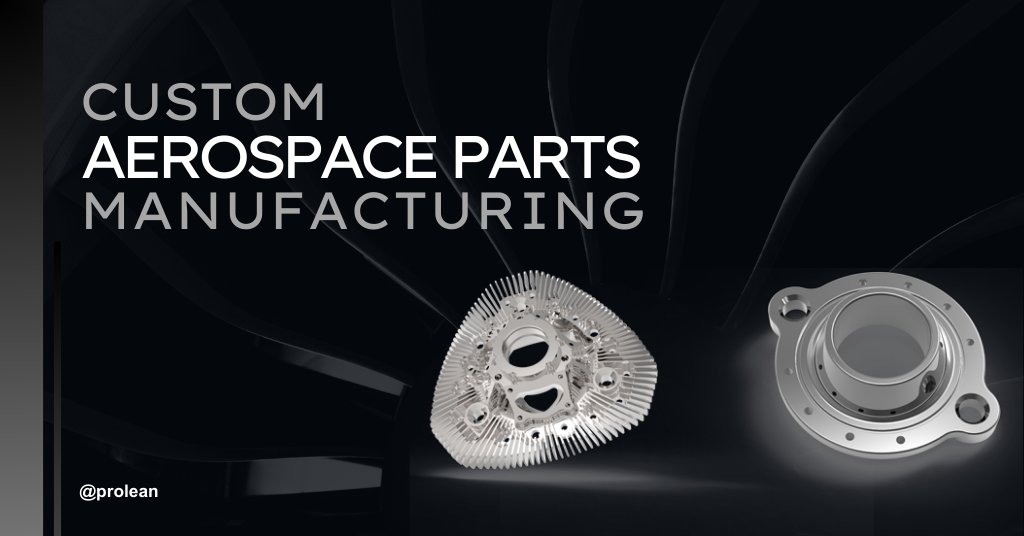
Custom aerospace parts manufacturing plays a critical role in the aerospace industry. Additive manufacturing techniques play a vital part in this context. Even, from the smallest fasteners to the largest structural components, each part undergoes fastidious engineering to meet the rigorous demands of flight environments.
Technical experts and engineers are confided with the responsibility of producing components that not only adhere to strict regulatory standards but also present economical solutions. Their expertise ensures that every custom part is meticulously intended to perform optimally in its application, thereby contributing to the overall safety and efficiency of aerospace vehicles. Alongside, it also gains attention due to its rapidly growing innovative industrial techniques, economical, and environmentally friendly solutions.
This article highlights the materials, essential considerations, and the machining methods to craft custom aerospace parts. Additionally, it addresses the challenges encountered by manufacturers in meeting the specific requirements of the part.
What is Custom Aerospace Parts Manufacturing?
Custom aerospace parts manufacturing refers to the specialized process of designing, engineering, and producing aerospace components that meet specific specifications of an aircraft or aerospace system. Unlike off-the-shelf standardized parts, custom aerospace parts are uniquely designed to address the needs and performance criteria of a particular aerospace vehicle.
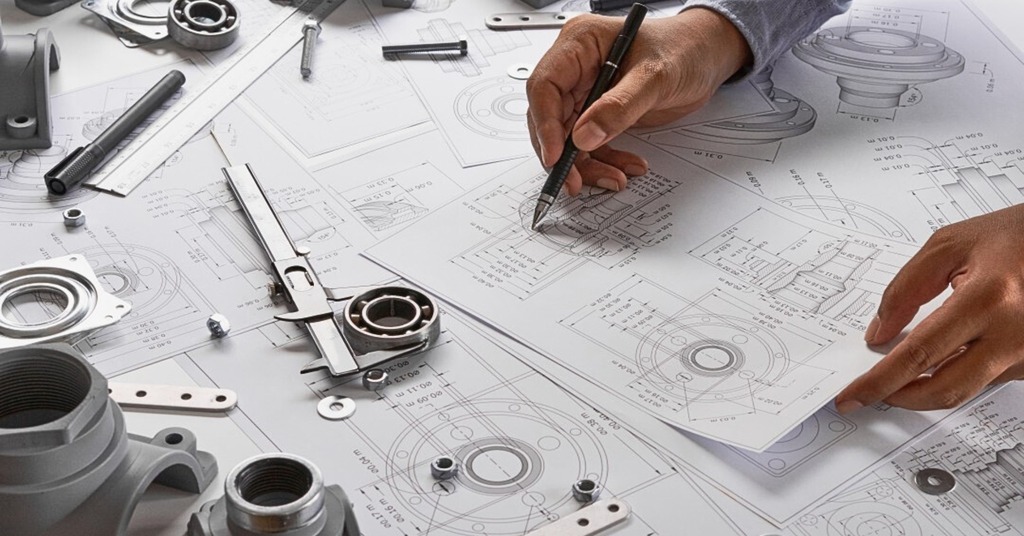
Custom Aerospace Parts Manufacturing
This process involves close collaboration between aerospace engineers, designers, and manufacturers to develop components that are optimized for their intended applications. It often includes advanced engineering analysis, prototyping, and testing to ensure rigorous quality standards.
Custom aerospace parts manufacturing can encompass a wide range of components, including structural elements, propulsion systems, avionics, cabin interiors, and more. These components may vary in size, shape, material, and functionality based on the specific requirements of the aircraft or aerospace system they are intended for.
Try Prolean Now!
CNC Aerospace Manufacturing: Key Steps in Component Production
When manufacturing aerospace components using CNC machining, several key steps are involved to ensure precision, quality, and adherence to industry standards.
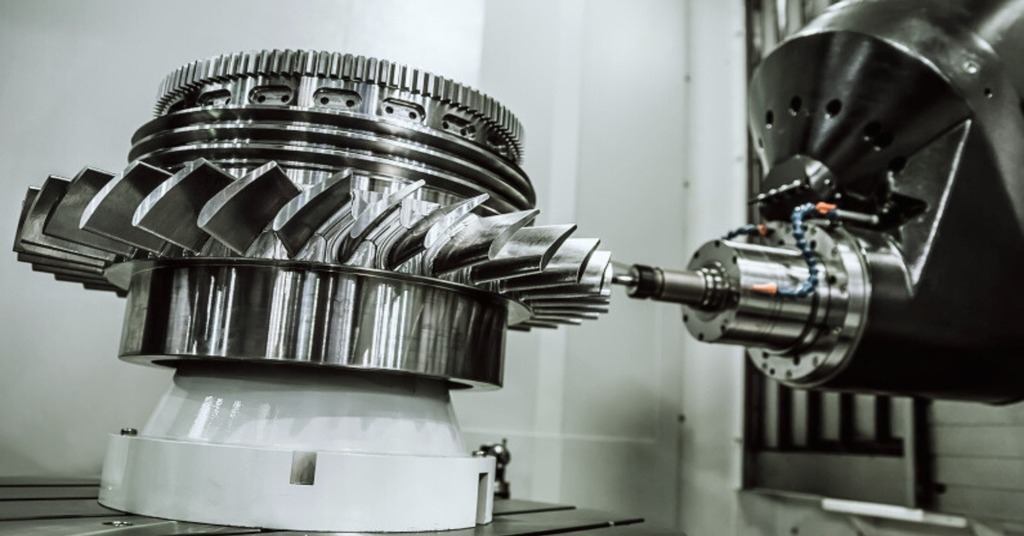
CNC Aerospace Manufacturing
Here’s an overview of the process:
1. Design and Programming
The process begins with the design of the aerospace component using Computer-Aided Design (CAD) software. Engineers create a digital model of the part, specifying its dimensions, features, and tolerances. This digital model is then translated into machine instructions, or G-code, using Computer Aided Manufacturing (CAM) software. This G-code contains instructions for the CNC machine to follow during the machining process.
2. Material Selection and Preparation
The appropriate material for the aerospace component is selected based on factors such as strength, weight, and thermal properties. The raw material, typically a metal or engineering plastic, is then prepared for machining by cutting it to size and securing it to the CNC machine’s work table.
3. Employing CNC Machining
The CNC machine executes the machining operations as per the programmed instructions. Then it precisely removes material from the workpiece to achieve the desired shape, dimensions, and surface finish.
This may involve various processes such as milling, turning, drilling, or grinding, depending on the complexity of the component.
- CNC Turning: This machining process is utilized to create cylindrical parts by rotating a workpiece against a cutting tool. In aerospace manufacturing, CNC turning is commonly used to produce shafts, fittings, and other rotational components necessary for various aircraft systems.
- CNC Milling: Another crucial technique in aerospace manufacturing, CNC milling involves removing material from a workpiece using rotary cutters. This versatile process is extensively used to produce a wide range of components, including engine parts, structural elements, and housings critical for aircraft construction.
- CNC Drilling: CNC drilling is integral for creating precise holes in aerospace components. These holes are essential for assembly processes, installing fasteners, and accommodating wiring and plumbing systems within aircraft structures, assuring proper functionality, and safety.
4. Tooling and Tool Changes
During CNC machining, different cutting tools may be used to perform various operations. Tooling selection and tool changes are critical to achieving optimal results. Automatic tool changers allow the CNC machine to switch between tools seamlessly, minimizing downtime and optimizing efficiency. Tools such as micrometers, calipers, and coordinate measuring machines (CMMs) are utilized to verify that the components meet exacting standards and specifications.
Tools For Quality Control:
- Coordinate Measurement Machines (CMM): These tools ensure that items are manufactured to exact specifications by measuring the geometry of real objects at discrete locations on their surfaces.
- Hardness testers: These measure a material’s resistance to deformation, i.e., its capacity to withstand dents or scratches, guaranteeing that the machined parts are strong and long-lasting.
- Optical comparators: These devices enlarge a part’s silhouette onto a screen so that it can be visually compared to predetermined templates and standards.
- Surface profilometers: These instruments quantify the surface roughness of machined parts, enabling a quantitative examination of surface textures and guaranteeing that finishes adhere to specifications.
5. Quality Assessment
Throughout the machining process, quality control measures are implemented to ensure that the aerospace component meets the required specifications. This may include in-process inspections using precision measurement tools such as calipers, micrometers, and coordinate measuring machines (CMMs). Any deviations from the specified dimensions or tolerances are identified and addressed promptly.
6. Finishing Operations
After the machining process is complete, additional finishing operations may be performed to enhance the surface finish or improve the part’s aesthetics. This may include deburring, polishing, or surface treatments such as anodizing or painting.
7. Testing and Validation
Once the aerospace component is finished, it undergoes rigorous testing and validation to ensure that it meets performance, safety, and regulatory requirements. This may include mechanical testing, dimensional inspection, and functional testing to verify its integrity and functionality.
8. Certification and Documentation
Once the component has passed all tests and inspections, it is certified for use in aerospace applications. Documentation of the manufacturing process, test results, and certifications is prepared and maintained for traceability and regulatory compliance.
By following these key steps, aerospace manufacturers can produce high-quality components with precision and consistency using CNC machining technology.
Related To: CNC Machining In Aerospace Parts Manufacturing
Other Machining Methods for Aerospace Parts Manufacturing
Besides CNC machining, several other machining methods are commonly used in aerospace parts manufacturing. Here are some notable ones;
1. Aerospace Forging
Forging techniques play a critical role in aerospace manufacturing. It enables the creation of resilient and highly precise components essential for aircraft construction. In the aerospace industry, forging is employed to fabricate quality parts in bulk volumes, ensuring both durability and precision.
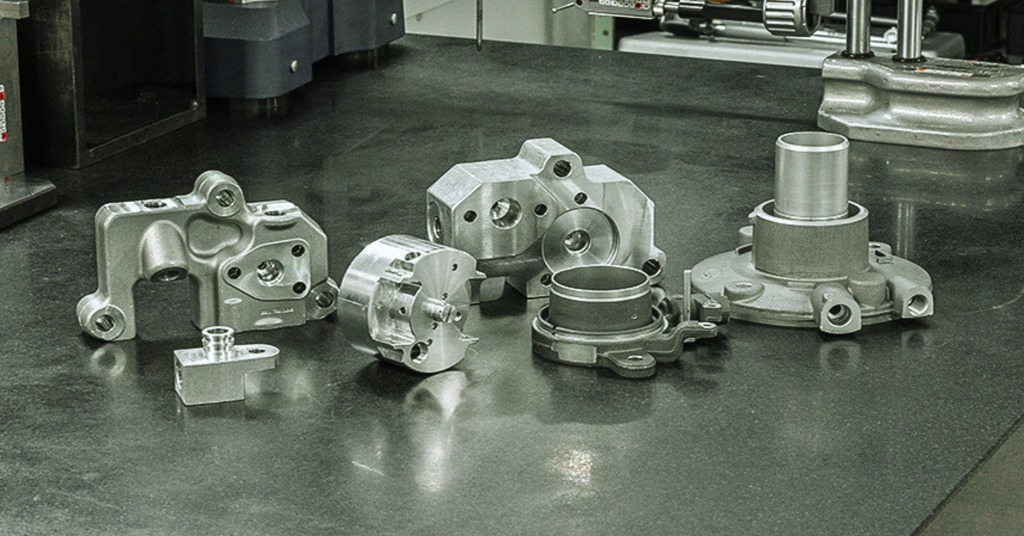
Aluminum Aerospace Forged components
Manufacturers meticulously shape raw materials under immense pressure and elevated temperatures to craft intricate aerospace components using forging methods such as open-die and closed-die forging. These techniques allow for the production of a wide range of parts, from turbine blades to structural elements, with superior mechanical properties and a refined grain structure.
The resulting aerospace components boast exceptional strength, toughness, and reliability, making them indispensable for critical applications within the aerospace sector. In environments where uncompromising performance and reliability are non-negotiable, forged parts stand out for their ability to withstand extremely harsh conditions and meet the stringent requirements of modern aircraft design and operation.
2. Aerospace Injection Molding
Thermoplastics play a vital role in aerospace manufacturing, particularly for crafting lightweight, non-structural components essential for aircraft interiors. Through the process of injection molding, molten plastic is precisely shaped into intricate components such as seats, tray tables, and control panels.
Injection molding offers several advantages as it enables the production of lightweight parts, contributing to significant fuel savings during flight. However, careful selection of thermoplastics is integral to ensure optimal performance in demanding aerospace environments.
The chosen thermoplastics must possess exceptional fire resistance and the ability to withstand extreme flight conditions, including temperature variations and high levels of vibration. Despite these challenges, injection molding remains a valuable manufacturing method for producing lightweight and cost-effective cabin components in modern aircraft.
3. Aerospace Additive Manufacturing
3D printing, or additive manufacturing, is a modern technology used to build parts layer by layer from digital models. Additive manufacturing techniques, including selective laser melting (SLM) or fused deposition modeling (FDM), are increasingly used to produce complex aerospace components, including brackets, ducting, and even engine components. It’s widely used in aerospace to make complex geometries that are hard to produce conventionally. This method is effective for creating customizable, strong, and lightweight components. It also speeds up the prototyping process, reducing design cycles and time to market.
4. Aerospace Metal Stamping
Metal stamping is indispensable for producing high-precision parts such as panels, brackets, and other structural components required for aircraft construction. Aerospace metal stamping is renowned for its precision and consistency across multiple parts, making it an essential and reliable method for aerospace components.
Additionally, metal stamping is highly cost-effective, particularly in large-scale production scenarios, where the method offers efficiency and scalability.
Progressive dies enable the execution of numerous operations in a single pass, streamlining production and ensuring the timely delivery of high-quality aerospace components
5. Aerospace Waterjet Cutting
In aerospace manufacturing, waterjet cutting technology is commonly used to fabricate various components, especially those made from composite materials. This process utilizes a high-pressure stream of water, often combined with abrasive particles, to precisely cut lightweight yet strong materials used in aircraft construction.
Some of the parts that are typically made using waterjet cutting include control surfaces like rudders, elevators, and ailerons, which require precise shaping to achieve aerodynamic efficiency. Additionally, waterjet cutting is employed in fabricating interior panels, fairings, and covers, as well as ducting and shrouds for engine and ventilation systems.
Moreover, this technology is also used for producing gaskets, seals, insulation, and acoustic materials vital for ensuring the safety and comfort of aircraft interiors.
Furthermore, waterjet cutting is instrumental in shaping composite structures such as winglets, wing ribs, and fuselage sections, offering versatility and precision in various aerospace applications.
Try Prolean Now!
Top Materials For Manufacturing Custom Aerospace Parts
In aerospace manufacturing, material selection is crucial, considering properties like strength and weight. CNC machine operators ensure precision by verifying alignment. Common materials include aluminum, titanium, and stainless steel, assuring parts meet industry standards for performance and safety.
1. Aluminum
Aluminum is a crucial material in aerospace manufacturing due to its lightweight and strong properties. It is extensively used in various aircraft components such as fuselage/main bodies, wings, panels, and skin.
Aluminum’s malleability, flexibility, and corrosion resistance make it highly suitable for these applications. Its efficient manufacturability and machinability in CNC machining processes allow for the production of durable aerospace components.
Additionally, its high thermal conductivity is beneficial for aircraft heat exchanger manufacturing, aiding in effective heat dissipation. Overall, aluminum’s versatility and effectiveness contribute significantly to enhancing the performance and safety of aerospace vehicles.
2. Titanium
Titanium is a highly regarded material in aircraft manufacturing due to its exceptional strength, lightweight properties, corrosion resistance, and high-temperature performance. Widely used in various aerospace components, including landing gear, aircraft frames, engines, and structural parts, titanium significantly enhances the overall performance, safety, and efficiency of aerospace vehicles.
Titanium’s outstanding strength-to-weight ratio makes it particularly valuable for aeronautical components, where weight reduction is critical for fuel efficiency and performance enhancement. Moreover, titanium offers an optimal balance between durability and weight savings.
Components such as landing gear struts and load-bearing parts benefit from titanium’s strength and fatigue resistance, ensuring durability during takeoff, landing, and throughout the landing gear’s operational life.
Moreover, titanium’s resilience to high temperatures makes it suitable for aircraft exhaust systems, including nozzles and exhaust pipes, where it can withstand extreme engine temperatures. Additionally, its nonmagnetic nature makes it ideal for electronic and navigational systems, where magnetic interference could pose issues.
3. Graphene
Graphene, a single layer of carbon atoms, is renowned for its exceptional strength, electrical conductivity, and thermal properties, making it an outstanding material for various aerospace applications. Graphene’s excellent electrical conduction properties make it well-suited for applications such as electromagnetic shielding, wiring, and electronic components in aircraft systems.
Additionally, it can be utilized in heat dissipation systems, thermal coatings, and engine components, enhancing heat management efficiency in aerospace vehicles. The unique electrical characteristics of graphene enable the creation of sophisticated sensors and electronic parts for aircraft, contributing to advanced monitoring and control systems.
Furthermore, graphene coatings exhibit superior hydrophobic qualities, making them effective for anti-icing applications on aircraft wings. This feature minimizes the need for energy-intensive de-icing equipment, enhancing aircraft safety and efficiency.
4. Stainless steel
Stainless steel plays a vital role in crucial aeronautical components like engine parts, exhaust systems, and structural elements. Its exceptional strength, corrosion resistance, and ability to withstand high temperatures ensure reliability and longevity in demanding aircraft conditions.
In engine components, stainless steel’s robustness and resistance to corrosion make it ideal for parts exposed to extreme temperatures and stress. Similarly, stainless steel components in exhaust systems endure harsh conditions, ensuring efficient exhaust flow over time.
For structural elements like wing spars and landing gear components, stainless steel’s strength and durability are essential for maintaining structural integrity and safety in aircraft.
Overall, stainless steel’s qualities make it a sound choice for the longevity of vital aeronautical components in aircraft operations.
5. Liquid Silicone Rubber
Liquid silicone rubber (LSR) finds extensive use in aircraft for its remarkable flexibility, temperature tolerance, and resistance to adverse climatic conditions. These properties make it an ideal material for critical applications such as seals, gaskets, and insulation.
LSR offers exceptional flexibility, allowing it to conform to irregular shapes and surfaces, ensuring effective sealing and insulation in various aircraft components. Its temperature tolerance enables it to withstand both high and low temperatures encountered during flight, maintaining performance and reliability in extreme conditions.
Furthermore, LSR’s resistance to adverse climatic conditions, including moisture, UV exposure, and harsh chemicals, ensures long-term durability and performance in aerospace environments. This makes it a preferred choice for sealing and insulating sensitive electronic components, engine compartments, and other critical areas of aircraft.
Plastic Materials Used in Aerospace Parts Manufacturing
Plastics stand as integral materials in aerospace machining, offering versatility and performance across various components.
- Polyether Ether Ketone (PEEK) renowned for its exceptional mechanical properties and chemical resistance, is a go-to choice for structural elements and engine parts, providing durability and reliability in demanding aerospace environments.
- Polyetherimide, known by its brand name Ultem, provides high strength, stiffness, and thermal stability, making it ideal for interior cabin panels and ducting, enhancing both safety and comfort for passengers.
- Polyethylene Terephthalate offers durability and chemical resistance, finding application in insulation materials and electrical connectors, ensuring the integrity and reliability of critical aerospace systems.
- Polycarbonate, prized for its transparency and impact resistance, finds its place in critical aerospace components like windows and canopies, ensuring both safety and visibility in flight.
These plastic materials not only enable lightweight designs but also contribute to the advancement of aerospace technology by providing innovative solutions intended to the industry’s exacting standards.
Related To: CNC Plastic Machining In Aerospace
Quality Assurance of Aerospace Manufactured Parts
- Pre-machining assessments: Evaluate raw materials and tool conditions for precise machining.
- In-process monitoring: Continuously monitor machining to ensure accuracy and make necessary adjustments.
- Dimensional checks: Measure critical dimensions during machining to ensure precision and reliability.
- Surface finish evaluation: Assess surface finish quality to meet aesthetic and functional requirements.
- Final inspection: Verify dimensions, surface finish, and critical parameters post-machining for reliability and safety.
Common Aerospace Manufactured Parts and Their Function
The table below showcases common custom-manufactured aerospace parts and their respective functions, important for aircraft and spacecraft performance.
| Custom Aerospace Part | Function |
| Engine Turbine Blades | Generate thrust for propulsion |
| Avionics Enclosures | Protect and house navigation and communication systems |
| Structural Brackets | Provide structural support and attachment points |
| Control Surface Actuators | Control the attitude and direction of the aircraft |
| Landing Gear Assemblies | Support the aircraft during takeoff and landing |
| Custom Fuel Tank Fittings | Facilitate fuel storage and distribution |
| Hydraulic Actuators | Operate various aircraft components hydraulically |
| Custom Electrical Connectors | Transmit power and signals between components |
| Structural Panels | Provide strength and rigidity to the airframe |
| Instrumentation Panels | House instruments for monitoring aircraft systems |
Read more:
- Benefits and Uses of Resistance Welding In Today’s Manufacturing
- Common Defects in Sheet Metal Nibbling Process
- CNC Machining of Composites: Everything You Need To Know
Try Prolean Now!
Superior Aerospace Parts at Prolean
At prolean, we ensure precision and quality for your aerospace project. Our ISO 9001 and AS 9100 certifications guarantee adherence to the highest standards. Benefit from our expertise in the form of;
- Early detection and resolution of design flaws
- Utilization of the latest technology for exceptional results
- Guidance in selecting the optimal materials
- Meticulous inspection at every stage for precision parts
Contact us today, and let’s take the first step together toward achieving impeccable results. So, send us your design and get an instant quote!
Summing Up
In aerospace parts manufacturing, precision, and innovation are paramount. There are various techniques to design and customize the parts for instance; a multi-step approach, utilizing CNC machining, metal stamping, and waterjet cutting for challenging materials and intricate designs.
The selection criteria of manufacturing processes depend on material properties, complexity, and volume requirements. However, it would be difficult to select the most suitable material and method for your needs. But, this article contains all essential details from material selection to a suitable technique.
The best approach is to consult with professionals before making any decision for your specific project. They will guide you through every critical step to ensure precision and reliability in your project.
FAQS
Q1- which materials are frequently utilized in CNC-machined aerospace manufacturing?
In CNC machined aerospace manufacturing, materials like titanium alloys, aluminum, and advanced composites are frequently utilized. These materials are chosen for their specific qualities, including strength, lightweight properties, and durability, and can be customized to meet the precise needs of each project, ensuring optimal performance and longevity of components.
Q2- Does CNC machining help aircraft manufacturing achieve more rapid production times?
CNC machining streamlines complex tasks, accelerating production cycles and simplifying manufacturing processes. This efficiency assures the high precision required for aerospace components while also substantially reducing project durations.
Q3- Can intricate geometries or designs be accommodated by CNC machining?
Yes, our CNC machining capabilities excel in handling complex shapes and geometries, making it a versatile solution for the intricate parts often required in the aerospace industry. This ensures adaptability to diverse design requirements.
Q4: What quality control methods are in place for CNC-machined aerospace components?
We prioritize quality in all our operations, implementing stringent quality control procedures throughout the CNC machining stages. Our ISO-certified processes underscore our dedication to delivering aircraft components that not only meet but exceed industry standards for quality and reliability.
Resource
B, Blacky-Milner, (Nov 1, 2021), Metal Additive Manufacturing In Aerospace: A review: Material & Design (Volume 209), DOI: 10.1016/j.matdes.2021.110008, Retrieved from Science Direct

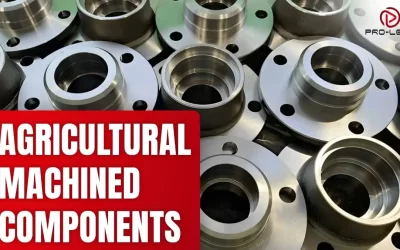
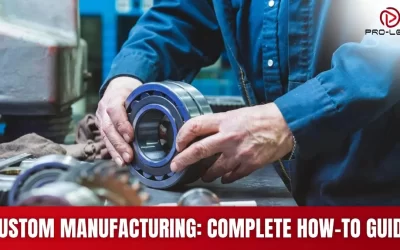

Clear picture of Aerospace parts manufacturing, i am expecting more on material side.. nice blog